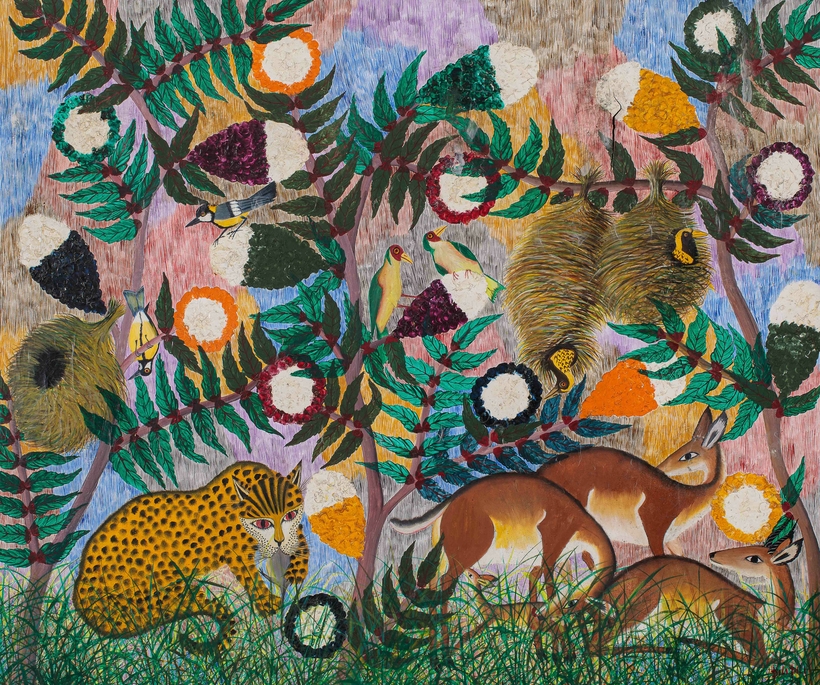Danger often lurks in the paintings of Pilipili Mulongoy: a snake about to strike, a leopard primed to pounce. Meanwhile, the creatures’ prey—perhaps some busy butterfly or docile gazelle—are blissfully unaware of what fate holds for them. It is chastening to look at these tableaux, knowing that the 20th-century artist lived through an age of atrocities in Belgian-occupied Congo. The question of whether Pilipili’s works are allegorical cannot be answered by an auction. Nonetheless, Artcurial’s upcoming Paris sale—“The Artists of Le Hangar: The Origins of Contemporary African Art”—is an important one.
Christophe Person, Artcurial’s director of contemporary African art, says the event provides “the missing link between tribal art and contemporary African art.”
On sale are roughly 40 paintings from some of Congo’s most impressive modernists. Most of them studied at Le Hangar, an art school established in the late 1940s by the eccentric Frenchman Pierre Romain-Desfossés. Located in Elisabethville, now Lubumbashi, the atelier inhabited an old hangar.

A talented artist, decorated veteran of both World Wars, and founding member of the African Union of Arts and Letters (he fell in love with Africa after being sent to Chad during W.W. II on a mission for de Gaulle), Romain-Desfossés saw himself as a facilitator as opposed to an educator. He supplied the most promising Congolese artists he could find with all the materials they needed and more or less let them get on with it. Before long, European institutes were taking an interest in their paintings, which tended to depict the details of their everyday lives, such as fishing, hunting, and ceremonial occasions.
Artists from Le Hangar—such as Pilipili, Mwenze Kibwanga, and the Chadian Bela Sara—were soon seeing their work exhibited in Brussels, Paris, Rome, London, and, later, New York and South Africa. Each of them drew inspiration from oral tales and legends, but their techniques were distinct. Pilipili used Pointillism for his dynamic background motifs; Mwenze, the son of a weaver, became known for his fabric-style strokes; and Bela painted ocean-floor scenes with his fingers. Success was followed by a long, fallow period when their paintings fell out of fashion, occasionally popping up at a Brussels flea market or a tribal art gallery.

Interest cropped up again in 2015 when the Fondation Cartier, in Paris, mounted “Beauté Congo,” a large-scale exhibition that included several works by the artists of Le Hangar. “That was when these paintings, especially in France, were discovered for the first time by a lot of people,” Person says. “You can see that the work remains very modern in the way that it is completely free from the techniques of perspective, proportions, and depth of field.”
The highlights of this sale are the large-format nature paintings by Pilipili, which come from a Congolese collector living in Paris. “He bought them directly from Pilipili in the 1980s, and they’ve been hanging in his flat ever since,” Person says. “So this is really the first time that they’re being seen.”
“The Artists of Le Hangar: The Origins of Contemporary African Art” is on view at Artcurial, in Paris, until March 22, ahead of the March 24 sale
Tobias Grey is a Gloucestershire-based writer and critic



 Discover
Discover